Festivals of India: India is a land of joy, a land of amalgamations and a land of different cultures and that is why every day in India is celebrated. Every day has significance and every day people of different faith join hands together, praying for their happiness and prosperity.
Being a highly spiritual country with many religions and faiths, India is not new to celebrating festivals. In fact, the country celebrates a number of festivals with zeal, zest and vigour, giving each festival a new meaning.
Major Festivals Of India
Every festival celebrated in the country has its own mythological significance. Whether you are a Hindu, Muslim, Sikh, Buddhist or Christian, every festival is marked with an occasion and a celebration that binds people of different faiths together. Here is a list of the top ten festivals in India.
1. Diwali – The Festival Of Lights
One of the most popular Indian festivals, Diwali, also known as Deepavali is the festival of lights. Diwali means a row of lights that were lit up when Lord Rama, a major deity in Hinduism returned with Goddess Sita after defeating Ravana.
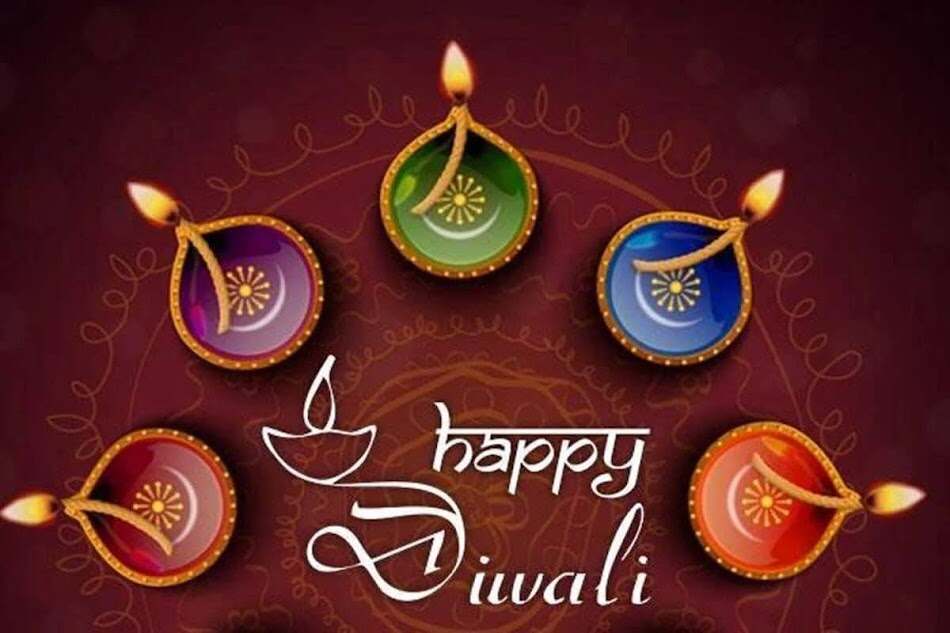
The day is celebrated on a no-moon night, therefore, diyas or candles are stacked together and lights light homes and societies. Before the festival, families clean their homes vigorously and invite Goddess Laxmi and Lord Ganesha. After several rituals and customs, fireworks are lit and people exchange gifts and sweets.
- Significance: Celebrate the return of Lord Rama to Ayodhya.
- When: October/November
- Celebrations: Lighting of diyas, fireworks, and family feasts.
2. Eid-Ul-Fitr
Arabic word of festivity, Eid is one of the most popular festivals in India. Celebrated majorly by Muslims, Eid is followed twice a year- Eid ul-Fitr and Eid-ul Zuha. While Eid ul-Fitr is the end of Ramadan, the month of fasting, it is celebrated for three days with great enthusiasm. Eid ul-Zuha or Bakra Eid is celebrated on the 10th of Zil Hajj month in the Islamic calendar. This is a festival of generosity where people share fortune with less fortunate people.
- Significance: Marks the end of Ramadan.
- When: Varies according to the Islamic calendar.
- Celebrations: Prayers, feasting, and giving alms.
3. Holi – The Festival Of Colors
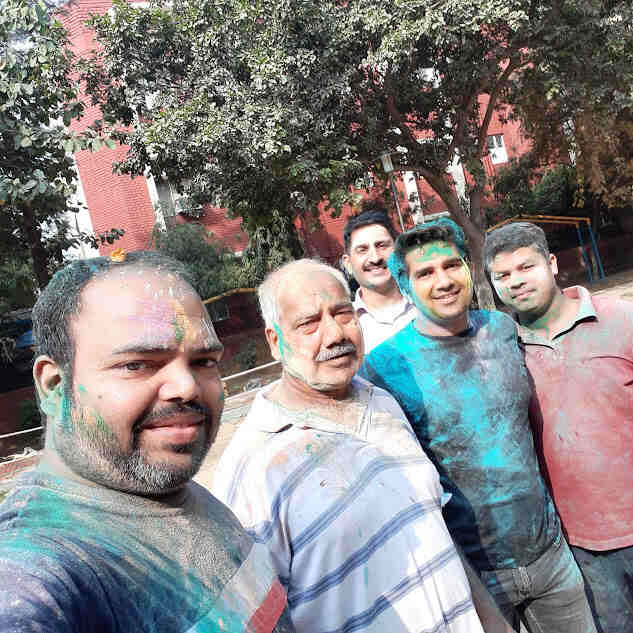
The festival of colours, holi is celebrated in the spring harvest season wherein people throw coloured powder and water on each other. Celebrated in the morning, the festival has received a modern twist with dances under sprinklers and drinking of Bhang, which is prepared from a paste of cannabis plant leaves. This is one day where no one minds being dirty.
- Significance: Marks the victory of good over evil.
- When: March
- Celebrations: Throwing of coloured powders, music, and dance.
Religious Festivals of India
4. Ganesh Chaturthi
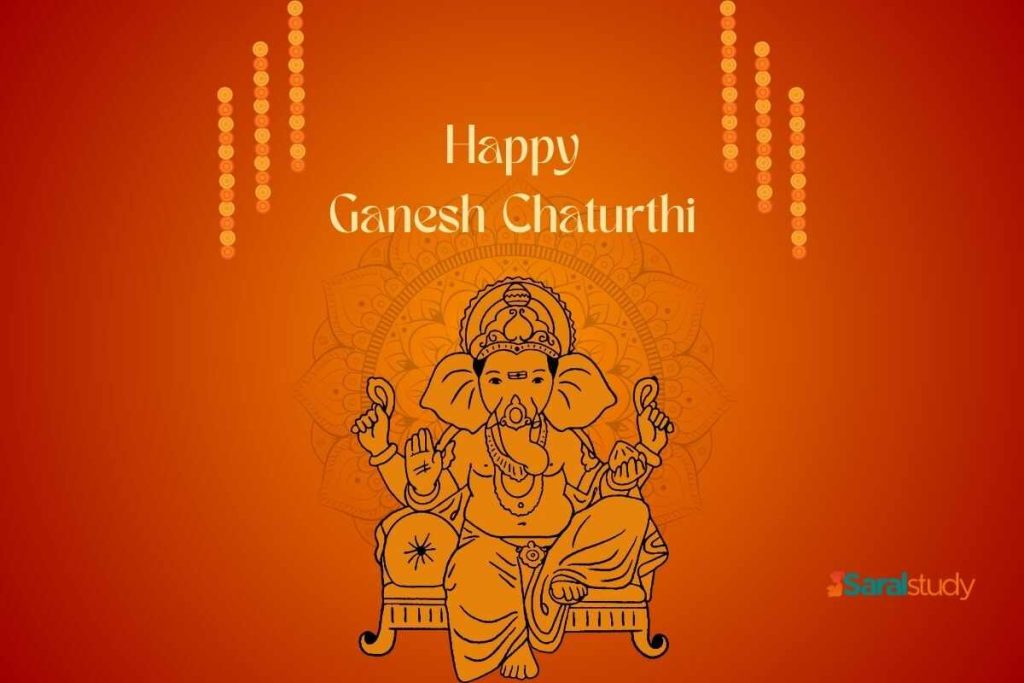
The festival of Ganesh Chaturthi is spectacular, and regularly shown in television serials and movies to depict its magnificence. The festival is followed by Lord Ganesha, the elephant-headed God who honours his birth. This eleven-day festival witnesses several huge, elaborately decorated and crafted statues of Lord Ganesha. People dance and colour each other in vermillion and podiums are made for celebration. After a lot of joy and singing, Lord Ganesha is submerged in the ocean.
- Significance: Celebrates the birth of Lord Ganesha.
- When: August/September
- Celebrations: Installation of Ganesha idols, prayers, cultural events, and immersion of idols in water.
5. Christmas
Over the years, Christmas is one of the festivals that have gained prime importance in the country. The festival, which is celebrated as the birth of Lord Christ is celebrated all over India, particularly by children who wait for 25th December and Santa Claus. This is a modern festival which has gained immense popularity over the years. During winters, places of interest, especially malls are filled with workers clad in Santa Claus outfits tempting kids!
- Significance: Commemorates the birth of Jesus Christ.
- When: December 25th
- Celebrations: Decorating Christmas trees, attending church services, exchanging gifts, and family feasts.
6. Kumbh Mela
Celebrated once in every 12 years, Kumbh Mela sees thousands and lakhs of devotees from all over the world! A huge gathering of devotees come to bathe in the holy river of Ganges. While Ardh Kumbh Mela is carried out once in every six years in Haridwar, Nashi, Ujjain and Prayagraj, the festival is renowned for dutiful and religious customs along with long parades by naga sadhus.
- Significance: It celebrates the victory of good over evil and the divine nectar of immortality.
- When: Every 12 years, with Ardh Kumbh Mela held every 6 years.
- Celebrations: Devotees take a holy dip in sacred rivers, participate in religious discussions, and attend mass feeding programs. The event includes grand processions with sadhus and saints, religious rituals, and cultural performances.
Cultural and Seasonal Festivals
7. Navratri and Dussehra
Navratri celebrates the victory of Goddess Durga over the demon Mahishasura. Dussehra marks Lord Rama’s victory over the demon king Ravana.
Navratri involves nine nights of dance (Garba/Dandiya) and worship of Goddess Durga. Dussehra includes effigy burning of Ravana, grand processions, and dramatization of the Ramayana.
- Significance: Celebrates the victory of Goddess Durga over Mahishasura.
- When: September/October
- Celebrations: Nine nights of dancing (Garba/Dandiya), culminating in Dussehra.
8. Makar Sankranti
Makar Sankranti marks the transition of the sun into the zodiac sign of Capricorn, signifying the end of the winter solstice and the beginning of longer days.
It is celebrated with kite flying, bonfires, traditional dances, and feasts. Special sweets made of sesame and jaggery are prepared and shared among friends and family.
- Significance: Marks the transition of the sun into Capricorn.
- When: 14th January Every Year
- Celebrations: Kite flying, feasts, and bonfires.
9. Pushkar Camel Fair
Again, this isn’t exactly a festival that has a mythological significance, yet it is celebrated with great fanfare. More than 50000 camels converge in Rajasthan’s land of Pushkar, where several contests are held for these camels. Some of these contests include races, trades, parades and beauty contests. This is one of the festivals that is celebrated as an old tradition in the country and garners a lot of tourists from country and abroad.
- Significance: A livestock fair that also hosts cultural performances and competitions.
- When: November
- Celebrations: Trading camels and other livestock, folk dances, music, and various competitions
10. National Kite
Festival Although it isn’t a mythological festival, the National Kite Festival is one of the most popular festivals in the country that is held in the state of Gujarat. People from all over the world visit the state to celebrate this festival during Makar Sankranti in January. This is one of those days when you can see kites soaring high in the sky.
The kites are elaborately crafted and decorated in a variety of styles including different sizes, shapes, patterns and colours. The sky itself looks like an amalgamation of a million hues of different colours. Expert kite makers and flyers come from the USA, Indonesia, Italy and China to celebrate the festival.
- Significance: Celebrated to mark Makar Sankranti with the flying of kites.
- When: January 14th
- Celebrations: Kite flying competitions, fairs, and traditional sweets.
Harvest Festivals in India
11. Baisakhi
India is a land of farmers with agriculture being one of the prime occupations in the country. Therefore, the festival of Baisakhi is widespread and is followed by different names in the south. The festival is a celebration held for the harvest of the Rabi crop and takes place from April to May. People offer prayers and Amritsar’s Golden Temple.
Dances and cultural treats are offered throughout North India with colourful fairs organized for farmers and their families. In South India, it is celebrated as Onam, a ten day harvest festival that has a rich cultural significance. On this day people welcome the homecoming of mythical king Mahabali.
- Significance: Harvest festival of Punjab.
- When: 13th April Every Year
- Celebrations: Dancing Bhangra, fairs, and rituals in Gurudwaras.
12. Pongal
- Significance: Harvest Festival of Tamil Nadu.
- When: January
- Celebrations: Cooking of Pongal dishes, decoration of cows, and traditional dances.
Apart from this, every state and every culture celebrates a variety of other national festivals like Independence Day and Republic Day. Diwali, Durga Puja, Eid, Holi, Ganesh Chaturthi, National Kite Festival, Kumbh Mela, Baisakhi Christmas, Pushkar Camel Fair.
Regional Festival
13. Durga Puja
This is nine days that no one in West Bengal wants to miss. The whole state seems to be covered in hues of red, yellow and orange as people dress up themselves and create beautiful statues of Goddess Durga. During this period, homes are decorated, gifts are purchased and people stay on the street all night, dancing and celebrating Durga Puja with each other. The last day of Durga Puja is conducted on the evening of Dashami.
- Significance: Celebrates the goddess Durga.
- When: September/October
- Celebrations: Idol immersion, pandal hopping, and cultural performances.
14. Onam
Onam is the harvest festival celebrated by the people of Kerala, marking the homecoming of the legendary King Mahabali.
The festival Onam features elaborate floral decorations (Pookalam), traditional dance performances, boat races, and the grand Onam feast known as Onasadya. People dress in traditional attire and participate in various cultural events, showcasing Kerala’s rich heritage.
- Significance: Harvest festival of Kerala.
- When: August/September
- Celebrations: Pookalam (floral arrangements), boat races, and traditional dances.
15. Chhath Puja
Chhath Puja is a major Hindu festival dedicated to the Sun God, Surya, and his sister, Chhathi Maiya. It symbolizes the gratitude towards the Sun for sustaining life on Earth and requests for prosperity and well-being.
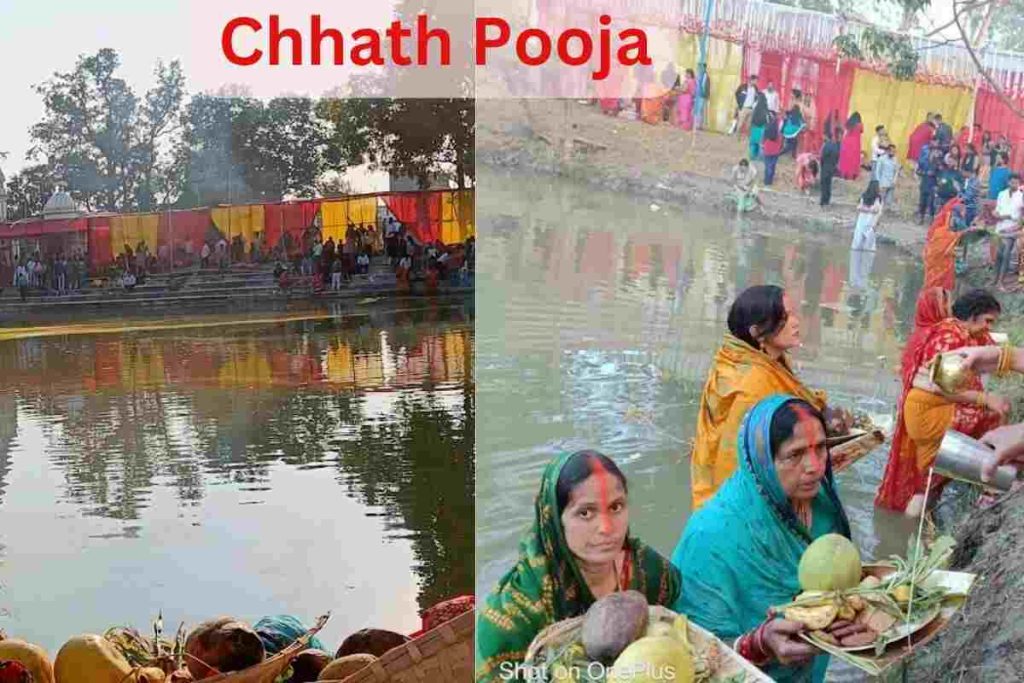
The festival spans four days, including holy bathing, fasting, and standing in water to offer prayers to the setting and rising sun. Devotees perform rituals on riverbanks and make offerings of fruits, sweets, and grains. Women observing the fast often sing traditional songs and maintain a rigorous fast without water.
- Significance: A festival dedicated to worshiping the Sun God and Goddess Nature for health and prosperity.
- When: It is celebrated twice a year, in summer (Chaiti Chhath) and winter (Kartika Chhath), typically in October or November.
- Celebrations: Devotees perform holy bathing, and fasting, and offer prayers to the Sun at riverbanks.
List Of Major Festivals in India
| Festival | Significance | Month/Date |
| Diwali | Return of Lord Rama to Ayodhya | October/November |
| Holi | The victory of good over evil | March |
| Eid-ul-Fitr | End of Ramadan | Varies (Islamic calendar) |
| Pongal | Harvest Festival of Tamil Nadu | January |
| Baisakhi | Harvest Festival of Punjab | April |
| Navratri | Victory of Goddess Durga | September/October |
| Dussehra | End of Navratri | September/October |
| Makar Sankranti | Sun’s transition into Capricorn | January |
| Onam | Harvest Festival of Kerala | August/September |
| Durga Puja | Celebration of Goddess Durga | September/October |
Festive Food and Traditions
- Unique Dishes: Sweets during Diwali, biryani during Eid, and Pongal dish during Pongal.
- Cultural Practices: Traditional dances, music, and rituals associated with each festival.
Importance of Festivals in Indian Culture
- Cultural Unity: Festivals bring people together irrespective of their backgrounds.
- Preservation of Traditions: They help in keeping age-old traditions alive.
- Economic Impact: Boost local businesses and tourism.
List Of Other Festivals in India
| S. No. | Festival | Description | Significance | Celebrations |
| 1 | Hanuman Jayanti | Celebrates the birth of Lord Hanuman, the ardent devotee of Lord Rama. | Honours the devotion and strength of Hanuman. | Special prayers, reading of Hanuman Chalisa, and offerings at Hanuman temples. |
| 2 | Ram Navami | Marks the birth of Lord Rama, the seventh incarnation of Vishnu. | Celebrates the virtues of Rama and his role in the Ramayana. | Chanting of bhajans, reading Ramayana, processions, and temple rituals. |
| 3 | Krishnashtami | Also known as Janmashtami, it celebrates the birth of Lord Krishna, the eighth incarnation of Vishnu. | Highlights the teachings and playful activities of Krishna. | Fasting, singing devotional songs, night vigils, and reenactments of Krishna’s life events. |
| 4 | Muharram | The first month of the Islamic calendar, it commemorates the martyrdom of Imam Hussain. | Observes the sacrifice and sorrow of Imam Hussain and his followers. | Mourning processions, public recitations, and self-flagellation in some communities. |
| 5 | Guru Purnima | Dedicated to teachers and spiritual gurus, it is celebrated on the full moon day (Purnima) in the Hindu month of Ashadha. | Pays tribute to the role of teachers and gurus in guiding one’s life. | Offering respect to teachers, performing Guru Puja, and reading scriptures. |
| 6 | Ganga Snan | A ritualistic bath in the holy river Ganges, believed to cleanse sins and bring spiritual merit. | Reveres the Ganges as a divine river that purifies and blesses devotees. | Mass bathing events, prayers, and offerings to the river. |
| 7 | Basant Panchami | Marks the onset of spring and is dedicated to Goddess Saraswati, the deity of knowledge and arts. | Celebrates learning, wisdom, and the spring season. | Wearing yellow clothes, kite flying, and Saraswati Puja. |
| 8 | Maha Shivratri | Celebrates the wedding of Lord Shiva and Goddess Parvati. | Symbolizes overcoming darkness and ignorance. | Night-long vigils, fasting, chanting of “Om Namah Shivaya,” and visiting Shiva temples. |
| 9 | Baisakhi | Marks the harvest festival in Punjab and the Sikh New Year. | Celebrates the formation of the Khalsa in Sikhism. | Community fairs, traditional dances like Bhangra and Gidda, and visiting Gurudwaras. |
| 10 | Buddha Purnima | Celebrates the birth, enlightenment, and death (Nirvana) of Gautama Buddha. | Honors the teachings and legacy of Buddha. | Processions, meditation, sermons, and offering flowers and candles at Buddha statues and monasteries. |
| 11 | Cheti Chand | The Sindhi New Year, marking the birth of Lord Jhulelal, the patron saint of Sindhis. | Celebrates new beginnings and the protection of Jhulelal. | Processions, worship at Jhulelal temples, and sharing traditional Sindhi foods. |
| 12 | Rath Yatra | A chariot festival dedicated to Lord Jagannath, his brother Balabhadra, and sister Subhadra. | Celebrates the annual journey of Jagannath, Balabhadra, and Subhadra to Gundicha Temple. | Pulling chariots through the streets, devotional songs, and large gatherings. |
| 13 | Hartalika Teej | A festival for women, it celebrates the union of Lord Shiva and Goddess Parvati. | Symbolizes marital bliss and the well-being of one’s spouse. | Fasting, prayers, wearing new clothes, and decorating hands with henna. |
| 14 | Nag Panchami | Worships snakes, particularly the serpent god Naga, for protection and blessings. | Acknowledges the importance of snakes in Hindu mythology and nature. | Offering milk and sweets to snake idols, and snake charmers display live cobras. |
| 15 | Pongal | A harvest festival celebrated in Tamil Nadu, marking the sun’s journey northwards. | Gives thanks for the harvest and the sun’s role in agriculture. | Cooking and sharing of Pongal (a sweet dish), decorating cattle, and family reunions. |
| 16 | Karva Chauth | A festival where married women fast from sunrise to moonrise for the safety and longevity of their husbands. | Emphasizes marital devotion and the bond between spouses. | Day-long fasting, dressing up in bridal wear, and performing rituals under the moon. |
| 17 | Makar Sankranti | Celebrates the sun’s transit into Capricorn, marking the end of winter solstice. | Signifies a new harvest season and auspicious beginnings. | Kite flying, bonfires, and sharing of sweets made from sesame and jaggery. |
| 18 | Navratri | A nine-night festival dedicated to the worship of Goddess Durga and her nine forms. | Symbolizes the victory of good over evil and the divine feminine energy. | Fasting, dance (Garba and Dandiya), and recitation of Durga Saptashati. |
| 19 | Pushkar Camel Fair | An annual livestock fair and cultural festival held in Pushkar, Rajasthan. | Signifies the importance of livestock in rural economy and showcases Rajasthani culture. | Camel trading, cultural performances, competitions, and local crafts market. |
| 20 | National Kite Festival | Celebrates the joy of kite flying, held annually in Gujarat during Makar Sankranti. | Symbolizes the spirit of freedom and festivity. | Kite flying competitions, night kite flying, and local food stalls. |
| 21 | Chhath Puja | Dedicated to the Sun God, it is celebrated to thank the Sun for sustaining life on earth and to seek his blessings. | Reveres the Sun God for sustaining life and prosperity. | Fasting, standing in water to offer prayers to the setting and rising sun, and sharing of prasad. |
| 22 | Mahavir Jayanti | Celebrates the birth of Lord Mahavir, the 24th Tirthankara of Jainism. | Highlights the principles of Jainism, such as non-violence and truth. | Prayers, processions, and acts of charity. |
| 23 | Raksha Bandhan | A festival celebrating the bond between brothers and sisters. | Symbolizes the protective and loving relationship between siblings. | Sisters tie a rakhi (sacred thread) around their brothers’ wrists, and brothers give gifts in return. |
| 24 | Bihu | A set of three Assamese festivals: Rongali (Bohag) Bihu, Kongali (Kati) Bihu, and Bhogali (Magh) Bihu, celebrating the Assamese New Year and the harvest season. | Marks the Assamese New Year and the harvest season. | Traditional dances, songs, feasting, and community events. |
| 25 | Maha Shivaratri | Celebrates the union of Lord Shiva and Goddess Parvati. | Represents the overcoming of darkness and ignorance. | Fasting, night-long vigils, chanting of mantras, and visiting Shiva temples. |
| 26 | Hemis | A Tibetan Buddhist festival celebrated at the Hemis Monastery in Ladakh. | Commemorates the birth of Guru Padmasambhava, the founder of Tibetan Buddhism. | Masked dances, music, and religious ceremonies. |
| 27 | Vishu | Celebrates the Malayalam New Year in Kerala. | Symbolizes prosperity and the beginning of a new year. | Viewing the Vishu Kani (auspicious items), bursting firecrackers, and feasting. |
| 28 | Maha Saptami | The seventh day of Durga Puja, involving rituals and worship dedicated to Goddess Durga. | Highlights the victory of Goddess Durga over the buffalo demon Mahishasura. | Elaborate rituals, cultural performances, and offerings to the goddess. |
| 29 | Bhogi | The first day of the four-day Pongal festival, marking the last day of the Tamil month Margazhi. | Symbolizes the disposal of old belongings to welcome new beginnings. | Bonfires to burn old items, cleaning and decorating homes, and preparing traditional dishes. |
Significance and Celebrations Of Other Festivals in India
-
Hanuman Jayanti
- Significance: Celebrates the birth of Lord Hanuman, the ardent devotee of Lord Rama.
- Celebration: Special prayers, reading of Hanuman Chalisa, and
-
Ram Navami
- Significance: Marks the birth of Lord Rama, the seventh incarnation of Vishnu.
- Celebration: Chanting of bhajans, reading Ramayana, processions, and temple rituals.
-
Krishnashtami (Janmashtami)
- Significance: Celebrates the birth of Lord Krishna, the eighth incarnation of Vishnu.
- Celebration: Fasting, singing devotional songs, night vigils, and reenactments of Krishna’s life events.
-
Muharram
- Significance: Commemorates the martyrdom of Imam Hussain.
- Celebration: Mourning processions, public recitations, and self-flagellation in some communities.
-
Guru Purnima
- Significance: Dedicated to teachers and spiritual gurus.
- Celebration: Offering respect to teachers, performing Guru Puja, and reading scriptures.
-
Ganga Snan
- Significance: Reveres the Ganges as a divine river that purifies and blesses devotees.
- Celebration: Mass bathing events, prayers, and offerings to the river.
-
Basant Panchami
- Significance: Marks the onset of spring and is dedicated to Goddess Saraswati.
- Celebration: Wearing yellow clothes, kite flying, and Saraswati Puja.
-
Maha Shivratri
- Significance: Celebrates the wedding of Lord Shiva and Goddess Parvati.
- Celebration: Night-long vigils, fasting, chanting of “Om Namah Shivaya,” and visiting Shiva temples.
-
Baisakhi
- Significance: Marks the harvest festival in Punjab and the Sikh New Year.
- Celebration: Community fairs, traditional dances like Bhangra and Gidda, and visiting Gurudwaras.
-
Buddha Purnima
- Significance: Celebrates the birth, enlightenment, and death (Nirvana) of Gautama Buddha.
- Celebration: Processions, meditation, sermons, and offering flowers and candles at Buddha statues and monasteries.
-
Cheti Chand
- Significance: The Sindhi New Year, marking the birth of Lord Jhulelal.
- Celebration: Processions, worship at Jhulelal temples, and sharing traditional Sindhi foods.
-
Rath Yatra
- Significance: A chariot festival dedicated to Lord Jagannath, his brother Balabhadra, and sister Subhadra.
- Celebration: Pulling chariots through the streets, devotional songs, and large gatherings.
-
Hartalika Teej
- Significance: A festival for women, it celebrates the union of Lord Shiva and Goddess Parvati.
- Celebration: Fasting, prayers, wearing new clothes, and decorating hands with henna.
-
Nag Panchami
- Significance: Worships snakes, particularly the serpent god Naga, for protection and blessings.
- Celebration: Offering milk and sweets to snake idols, and snake charmers display live cobras.
-
Pongal
- Significance: A harvest festival celebrated in Tamil Nadu, marking the sun’s journey northwards.
- Celebration: Cooking and sharing of Pongal (a sweet dish), decorating cattle, and family reunions.
-
Karva Chauth
- Significance: A festival where married women fast from sunrise to moonrise for the safety and longevity of their husbands.
- Celebration: Day-long fasting, dressing up in bridal wear, and performing rituals under the moon.
-
Makar Sankranti
- Significance: Celebrates the sun’s transit into Capricorn, marking the end of winter solstice.
- Celebration: Kite flying, bonfires, and sharing of sweets made from sesame and jaggery.
-
Navratri
- Significance: A nine-night festival dedicated to the worship of Goddess Durga and her nine forms.
- Celebration: Fasting, dance (Garba and Dandiya), and recitation of Durga Saptashati.
-
Ganesh Chaturthi
- Significance: Commemorates the birth of Lord Ganesha, the remover of obstacles and the god of beginnings.
- Celebration: Installing Ganesha idols, daily prayers, and immersing the idols in water after ten days.
-
Christmas
- Significance: Celebrates the birth of Jesus Christ, the central figure of Christianity.
- Celebration: Church services, decorating Christmas trees, exchanging gifts, and festive meals.
-
Pushkar Camel Fair
- Significance: An annual livestock fair and cultural festival held in Pushkar, Rajasthan.
- Celebration: Camel trading, cultural performances, competitions, and local crafts market.
-
National Kite Festival
- Significance: Celebrates the joy of kite flying, held annually in Gujarat during Makar Sankranti.
- Celebration: Kite flying competitions, night kite flying, and local food stalls.
-
Chhath Puja
- Significance: Dedicated to the Sun God, it is celebrated to thank the Sun for sustaining life on earth and to seek his blessings.
- Celebration: Fasting, standing in water to offer prayers to the setting and rising sun, and sharing of prasad.
-
Mahavir Jayanti
- Significance: Celebrates the birth of Lord Mahavir, the 24th Tirthankara of Jainism.
- Celebration: Prayers, processions, and acts of charity.
-
Raksha Bandhan
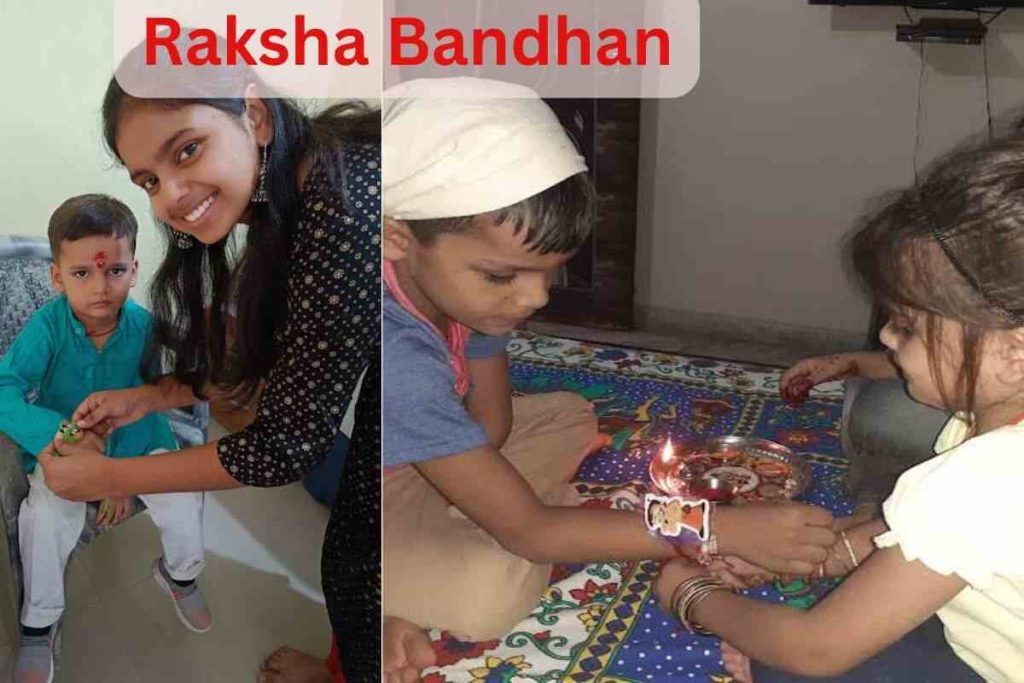
-
- Significance: A festival celebrating the bond between brothers and sisters.
- Celebration: Sisters tie a rakhi (sacred thread) around their brothers’ wrists, and brothers give gifts in return.
-
Bihu
- Significance: A set of three Assamese festivals: Rongali (Bohag) Bihu, Kongali (Kati) Bihu, and Bhogali (Magh) Bihu, celebrating the Assamese New Year and the harvest season.
- Celebration: Traditional dances, songs, feasting, and community events.
-
Maha Shivaratri
- Significance: Celebrates the union of Lord Shiva and Goddess Parvati.
- Celebration: Represents the overcoming of darkness and ignorance, fasting, night-long vigils, chanting of mantras, and visiting Shiva temples.
-
Hemis
- Significance: A Tibetan Buddhist festival celebrated at the Hemis Monastery in Ladakh.
- Celebration: Commemorates the birth of Guru Padmasambhava, the founder of Tibetan Buddhism, masked dances, music, and religious ceremonies.
-
Vishu
- Significance: Celebrates the Malayalam New Year in Kerala.
- Celebration: Viewing the Vishu Kani (auspicious items), bursting firecrackers, and feasting.
-
Maha Saptami
- Significance: The seventh day of Durga Puja, involving rituals and worship dedicated to Goddess Durga.
- Celebration: Highlights the victory of Goddess Durga over the buffalo demon Mahishasura, elaborate rituals, cultural performances, and offerings to the goddess.
-
Bhogi
- Significance: The first day of the four-day Pongal festival, marking the last day of the Tamil month Margazhi.
- Celebration: Symbolizes the disposal of old belongings to welcome new beginnings, bonfires to burn old items, cleaning and decorating homes, and preparing traditional dishes.
Conclusion
India’s festivals are a true celebration of its cultural diversity and rich heritage. They offer a glimpse into the country’s traditions, beliefs, and communal harmony. Whether you are looking to participate or simply learn about them, understanding these festivals can provide deep insights into India’s vibrant cultural tapestry.

